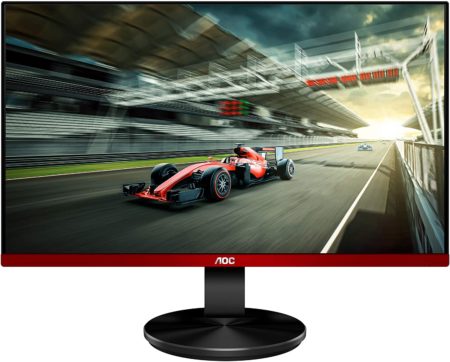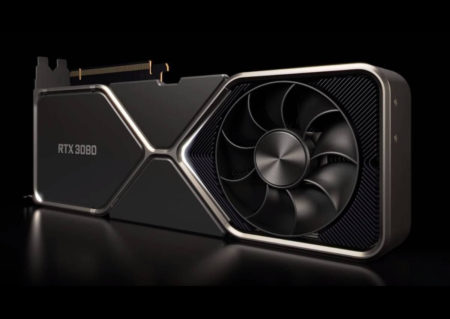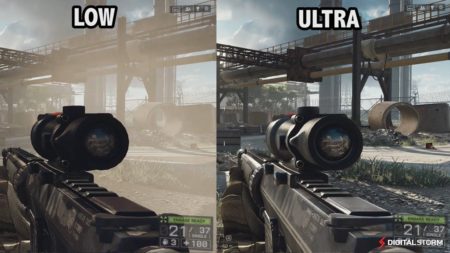If you have been experiencing lags and stutters in your visuals, particularly with your games, you suffer from a bad FPS (frames per second). The only remedy for this issue is to get a more powerful graphics card.
Hence the answer to the question, “does graphics card affect FPS”? is a resounding yes! The choice of graphics card has a direct impact on the FPS on graphically intensive tasks like gaming and also with using video editing software.
You could tell by the name itself that a graphics card has a high relationship with visuals, including FPS and the quality of the graphics.
The choice of the graphics card impacts anything related to 2D and 3D graphics processing.
Often people assume that a graphics card is a gaming-centric component. That is hardly the case, as it is critical for professional tasks such as video editing and graphic design.
In the following article, I will discuss whether a graphics card affects FPS and to what extent. I will also discuss what tasks benefit from GPU and its relationship with the CPU.
TABLE OF CONTENTS
So Does Graphics Card Affect FPS?
Let us first address the big question: does a GPU affect FPS, and to what extent?
If you are a gamer, then the component that should be the closest to your heart is the graphics card.
Therefore, when given a specific budget for your PC, you should try to maximize the portion for the GPU because it will directly impact the graphics quality setting and the FPS.
The table below should explain how a low-, mid-range, and high-end graphics card impact the FPS. I have selected the following GPUs:
- (Low-End) AMD Vega 8: This is an integrated graphics card found in AMD 5000 series CPUs, i.e., AMD Ryzen 5700G. This is among the BEST iGPUs at the moment.
- (Mid Range) NVIDIA GTX 1060Ti: A dedicated GPU; fairly average and well-priced GPU found on decent gaming PCs.
- (High End) NVIDIA RTX 3080: One of NVIDIA’s flagship and expensive dedicated GPUs.
NOTE: The table shows FPS at HIGH graphics settings and 1080p resolution.
| AMD Vega 8 5000 Series (Best iGPU) | NVIDIA GTX 1060Ti (Midrange Dedicated GPU) | NVIDIA GTX 3080 (High End Dedicated GPU) |
|
|---|---|---|---|
| GTA V | 40.6 FPS | 94 FPS | 162 FPS |
| Far Cry 5 | 31 FPS | 67 FPS | 121 FPS |
| Far Cry 6 | Unplayable | 52 FPS | 81 FPS |
| Forza Horizon 5 | 35 FPS | 65 FPS | 128 FPS |
| Metro Exodus | 17.8 | 37.9 FPS | 98 FPS |
- Scores are taken from notebookcheck.net
You can see that the better the graphics card, the more FPS you get.
Also Read: is 4GB Graphics Card Enough for Gaming?
What is a Good FPS For Gaming to Aim For?
While different gamers have different opinions, here is what I think.
| FPS | Remarks |
| 60 FPS or Higher | This is absolutely what you must aim for. You will have a beautiful and a seamless experience with this FPS. |
| 50-60 FPS | This isn’t bad, either. You should have a pretty smooth visual experience with this FPS. |
| 40-50 FPS | You are still in the green. The visuals will be pretty tolerable. |
| 30-40 FPS | The bare minimum you should aim for is to avoid lags and stutters. |
| 30 and Low | You will experience lags; the frame will skip, and the overall experience will feel sluggish. |
Of course, some enthusiasts like to maintain 120 FPS and higher. But to get 120 FPS at high graphics quality settings for AAA games, you need a powerful graphics card and a monitor with a refresh rate of 120Hz or higher. (More on this below).
The following video shows the difference in visuals between 30 and 60-FPS games.
Also Read: Are Graphics Cards Plug and Play?
A Note on How Graphics Quality and Resolution Impact FPS
It is worth pointing out that the game’s FPS and graphics quality settings are highly related.
The frame per second will improve if you set the graphics quality low and the resolution down.
Conversely, if you set the graphics quality to high with high resolution, your GPU will have to work harder, resulting in lower frames per second.
If you have a weak graphics card, you often have to juggle between the graphics settings and the resolution to come at a playable frame rate.
The following table explains this:
| 1440) (WQHD) | 1080P (FHD) | 720P (HD) |
|
|---|---|---|---|
| GTA V | 49.5 FPS | 61.8 FPS | 73 FPS |
| Fortnite | 86.6 FPS | 101 FPS | 123 FPS |
| World of Tanks | 69.5 FPS | 105 FPS | 109 FPS |
- The graphics card used in the table above is the NVIDIA GTX 1060 6 GB
- All FPS are taken at MAX graphics settings
- Scores are taken from userbenchmark.com
It is pretty conclusive from the table above that resolution directly impacts the FPS.
Also Read: Can Motherboard Bottleneck a GPU?
FPS and the Monitor Refresh Rate are Related!
To experience more than 60 FPS, you must also have a higher than 60Hz refresh rate monitor!
Most contemporary monitors have a refresh rate of 60 Hz. This means they CANNOT display a frame rate higher than 60 FPS, EVEN IF your graphics card can generate more elevated than 60 FPS.
Take, for instance, the GTX 1060 6GB dedicated graphics card that can maintain an average frame rate of 105 FPS on World of Tanks at 1080P (high settings).
However, if I only have a 60Hz monitor, the max frame rate my eyes will experience is 60 FPS. I will not see the difference the extra 45 frames make.
To see the difference higher than 60 FPS makes, I will need to get a monitor that has a refresh rate higher than 60Hz, like the AOC G2490VX you see below:

The monitor above has a refresh rate of 144Hz and can display a frame rate of up to 144 frames per second.
By the way, the inverse is also true here. To experience the monitor’s full 144 frames per second potential, you also need a graphics card to push out such a high frame rate on your game at your desired graphics settings.
What Affects FPS More CPU or GPU for Gaming?
GPU, hands down, has a much higher impact on the frame per second than a CPU.
FPS comparison on a budget Intel Core i3 vs. an expensive Intel Core i7 would be the minimum – if the graphics card is left to be the same.
On the other hand, the FPS comparison on a low-end AMD Vega 8 integrated graphics card vs. a high-end dedicated NVIDIA RTX 3080 is PHENOMENAL, to say the least, as we already saw above.

There MUST Be a Parity Between the GPU and CPU
While a GPU has a much more significant impact on FPS, there must be parity between the choice of a CPU and the GPU.
In other words, it is very unwise to get an entry-level Intel Celeron CPU with a meager two cores and couple that with a high-end NVIDIA RTX 3080 graphics card.
A weak CPU will cause SERIOUS PERFORMANCE BOTTLENECKs for the powerful graphics card.
The video explains this below.
You will notice in the video that the performance drop is more pronounced when the core count of a CPU is below six cores. At the same time, the performance gains from 6 cores and above aren’t phenomenal.
So here is the gist of it. To avoid graphics card performance bottlenecks:
- When getting a mid-range graphics card, try to get at least a 4-core CPU from the newer generations, i.e., Intel Core i3 or Ryzen 3
- When getting a high-end graphics card, try to get at least a 6-core CPU from the newer generations, i.e., Intel Core i5 / Ryzen 5
Also Read: How Many CPU Cores Do Games Need?
What Other Tasks / Application Experience Higher FPS from a Better Graphics Card?
There are plenty of other tasks that are impacted by the graphics card. Besides gaming, the most significant difference in FPS is noticed in video editing.
In video editing, a sound graphics card affects the FPS of the preview generation and timeline scrubbing.
A good graphics card can drastically improve how quickly the frames are rendered in the live preview of your timelines. This includes scrubbing the timeline.
If you have a weak graphics card, the live preview generation of your footage and scrubbing the timeline will experience severe lags and stutters as the graphics card cannot process the frames quickly enough.
If you have a high-end graphics card, on the other hand, then preview generation and scrubbing will be seamless.
Read in detail: Do You Need a Graphics Card for Video Editing?
Graphics Card will NOT Impact the FPS for Everyday Office Tasks
If you wonder if having a sound graphics card will affect FPS on everyday and office tasks, then the answer is NO; there will be NO impact on the FPS.
You will not see any FPS difference when surfing the web, writing a report on MS Word, working on an Excel sheet, email correspondence, watching movies, etc.
I explain this in the article: Does Your PC Need a Graphics Card If it’s not for gaming?
Also Read: Does Motherboard Matter for Gaming?
Final Words
So does graphics card affect FPS? It surely does. The choice of your graphics card can drastically impact the FPS in gaming.
Of course, getting a high-end graphics card isn’t cheap. A high-end graphics card can cost as much as an entire PC.
If you are a gamer on a tight budget, I suggest at least going for an excellent low-mid-range dedicated graphics card. They will still be drastically better than the integrated graphics cards on the CPU.
FREQUENTLY ASKED QUESTIONS
1. Does Higher FPS Mean Better Graphics?
Though related, graphics quality and FPS are two different characteristics of your overall visual experience.
A higher FPS does not mean the visuals will be more vibrant, rich in detail, and gorgeous. A higher FPS only means the motion will be smooth and lag-free.
Higher quality of graphics means that the visuals have higher graphical assets, including high-res texture, particles, foliage, great character details, realistic lighting, and excellent shadow details.

Low vs. High graphics quality on Battlefield 4. Source: YouTube
The higher the graphics quality, the lower the FPS since the graphics card has to work much harder to render more graphical assets in a single frame.
2. Do Higher-End Graphics Cards Give You More Detail or More FPS?
This is an incorrect way of looking at this.
A higher-end graphics card can give you more FPS WHILE allowing you to maintain more quality.
Think of it this way. Low-end graphics cards have FEWER RESOURCES to handle high FPS while maintaining high graphics quality settings.
And therefore, on low-end graphics cards, you often have to dial down the quality of the graphics to get playable FPS.
High-End graphics cards, on the other hand, have MORE RESOUCES. They can handle playable FPS while at the same time maintaining high graphics quality settings.
3. Can I use multiple graphics cards to improve FPS in games?
Yes, you can use multiple graphics cards to improve FPS in games, but this will depend on whether your system supports multiple graphics card configurations, as well as the specific requirements of the games you are playing.
For example, some games may not be optimized for multiple graphics card configurations and may not provide any performance benefits.
Additionally, using multiple graphics cards can also consume more power and generate more heat, which can lead to stability issues.
4. What should I look for in a graphics card to maximize FPS in games?
To maximize FPS in games, you should look for a graphics card that meets the requirements of the games you plan to play.
This will vary depending on the specific games you want to run, but generally speaking, you should look for a graphics card with a fast clock speed, a large amount of memory, and a high number of CUDA cores or stream processors.
You should also consider factors such as power consumption, heat generation, and compatibility with your system’s other components when selecting a graphics card.
Ultimately, the best graphics card for maximizing FPS in games will depend on your specific needs and budget.
Also Read: How to Check Which Graphics Card is Being Used?
Also Read: Do Laptops Have Graphics Cards?
Also Read: Is Integrated Graphics Card Good for Gaming?
